Best known for the defunct BBC soap the truth is most foreigners who live in Coín have really coined it in, says Jon Clarke
IT has been well over a decade since Eldorado slunk from the TV screens with a whimper and an hasta luego. The biggest soap opera flop in British TV history, the BBC drama had hoped to replicate some of the sunshine and glamour of imported Australian soaps like Neighbours, and keep EastEnders on its toes.
How wrong could they have been? Ham-strung with problems from the start, the show suffered from poor casting, bad storylines and cringing performances by actors, many of whom didn’t even know what a read-through was.
Indeed, the only thing producers had no shortage of was sunshine, with the set appropriately built in the hills in Coin above the Costa del Sol.
Amazingly, it is still there today – and despite the show having re-couped its investment many times over due to re-runs, it stands as a stark reminder of the BBC’s failure to replicate on screen the life on the Spanish costas.
But, that is not to say that the purpose-built set, high in the hills above the Guadalhorce Valley town has gone to waste.
Eldorado set from above. Click to view larger map
A string of films and TV dramas have been produced there since – and Antonio Banderas is even scheduled to be part-making a movie there this Autumn.
According to sources, Spain´s hottest star is making a film about Andalucia´s last Moorish ruler King Boabdil – he of the last sigh – who handed over Granada to the Christians in 1492.
“He is due here in September or October,” confirms Marco Berrocal, who manages the studio Ciudad del Cine, which these days also comprises a hotel and restaurant.
“We have had plenty of productions here since Eldorado ended and we hope to have many more.”
It is certainly the most unusual place hidden amid a pine forest high above Coin. You take a windy lane known as Camino de los Llanos which goes higher and higher into the hills until you suddenly come across… well, a self-contained village. Except that it isn´t.
A petrol station, town hall, village square, post boxes and phone boxes, all suddenly emerge in a clearing within the forest. More The Shining, than a soap opera, even the receptionist insists that it is “a cold and very spooky” place to stay the night in winter.
Certainly most people in Coin try their best not to be associated with the defunct soap opera Eldorado.
“It is a complete coincidence that the programme was set here,” says estate agent Richard Nicholson, who has lived in Coin for seven years. “It was based on an urbanisation in Nerja that had become quite well known in the UK at the time.
“It was about an English ghetto and nothing like Coin, which is a real Spanish town, where most foreigners try to integrate and learn the language and those who don’t mostly don’t get on and end up leaving for the coast.”
Ask Robert Zdrill. He actually settled in the inland Malaga town having worked as a video editor on Eldorado for a year.
“I fell in love with the place and didn´t want to move anywhere else,” explains the Canadian, who gave up making pop videos for the likes of Simple Minds and Geri Halliwell to start his own satellite television company RSS.
“The landscape is like British Columbia or California and there is so much history going back to Roman times.
“On top of that they are incredibly laid back and tolerant up here and they have definitely maintained their artistic tradition, with ceramics and other arts.”
Marble from the quarries was used in the construction of the Roman town of Italica
You definitely get a sense of this, wandering around the historic core of the town, which has some surprisingly attractive old buildings and a good variety of shops.
Even better, there is finally a stylish place to stay in the heart of the town.
Converted by a pair of local brothers, Hotel Albaicin has cleverly maintained the original features of an old sock factory and an attached 18th century townhouse, alongside modern architectural intervention. There are even some of its original Moorish features, such as a water fountain, alongside stylish modern staircases and contemporary rooms.
“We just wanted to preserve some of Coin´s best heritage,” explains Sebastian Guerrero Loriguillo, whose girlfriend Maria Jose Garcia was the architect.
Coming from a long line of artists and musicians – his grandfather painted the Tajo of Ronda, while his great grandfather toured with famous flamenco star Juan Breva – his family was schooled to appreciate the building´s history.
“We have worked more than ten years through a charity to protect and preserve the old town of Coin, so when we found this old building for sale in 2004 we jumped at the opportunity to buy it,” continues Guerrero, 35.
“We knew one thing that Coin badly needed was a stylish, central hotel to create a focal point. We believe we have done that.”
There is no doubt that the hotel and the Albaicin area, which was named after the tightly packed sloping streets of Granada´s famous Arabic barrio, is a nice place for a stroll.
There are still plenty of remnants of the old Arabic town, which has long been a thriving agricultural centre and the main market town for the Guadalhorce valley.
Located in a fertile valley of the Rio Grande river, it became known for its fruits, such as oranges, avocados and more recently pomegrantes.
It was under the Romans – who named it Lacibis – that Coin became an important market town and transition point for the minerals being quarried in the nearby Sierra Blanca.
Marble from these quarries was used in the construction of the Roman town of Italica, or Roman Sevilla, and the mining of iron ore and marble continued into the 19th Century.
During the time of the Visigoths, like many places in Andalucia, the town lost its lustre and largely fell into ruin until the Moors conquered the region and rebuilt it around 929AD.
It went through something of a renaissance, thanks to the Arabs clever use of water and love of gardens and planting. But their days were numbered and in 1485, after a long siege, the town finally fell to the Christian Crusaders from the north, who were said to have included Christopher Columbus among their troop.
A wonderful spot which on a clear day has views of the Sierra Nevada 180kms away
But the Moors legacy of planting and gardens was thankfully respected, a factor that was clearly noted by celebrated British explorer Captain Cook when he visited the town, along with Cártama and Alhaurín in 1829. Travelling with the Royal Navy, he was mightily impressed.
“These villages,” he wrote, “are on rising ground above the river and in beauty of situation and cultivation cannot be excelled. They afford a specimen of the whole country when possessed by the Moors, being surrounded by gardens with orange, lemon and palm trees and abounding in all the fine as well as the more common fruits.”
To this day an orange tree features on Coín’s coat of arms and there is no doubt that the town still has a curious feel of being both bustling and rural in equal measures.
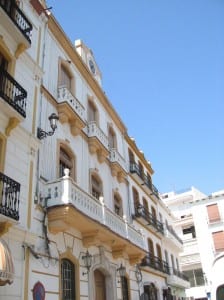 While on one hand slick businessmen walk into the town hall armed with briefcases and clutching planning applications, it is not unusual to see a tractor or quad bike driving around its narrow lanes, and there are numerous farming implement businesses scattered around.
While on one hand slick businessmen walk into the town hall armed with briefcases and clutching planning applications, it is not unusual to see a tractor or quad bike driving around its narrow lanes, and there are numerous farming implement businesses scattered around.
“That is certainly the difference between Coin and Alhaurin,” says Dutchman Carlo von den Nieuwenhuijzen, 47, who is a regular visitor to both towns through his job as a chef at a guesthouse. “While Alhaurin is more urban and built up, Coin has more of a country feel. You can really sense it in the shops. While Alhaurin is the place to find top quality salmon or Asturias blue cheese, Coin is good for locally-grown fruit and veg and has an excellent saturday market on the feria ground.”
He and his partner Ronald Henselmans, 43, had been quite specific when choosing the main parameters for locating the perfect spot to open their B&B Casa Don Carlos.
Just 25 minutes to the airport and 25 to the coast, it also needed good views and to be in a decent size plot with at least five bedrooms.
“We looked at 50 houses in just one week with five different estate agents,” says Ronald, a former Ikea manager from Brabant. “We were specific about what we wanted, but were still shown a lot of rubbish and one house, for example, didn’t even exist.
“Eventually we found this wonderful spot, that on a clear day has views of 180kms all the way to the Sierra Nevada.”
They are not the only Dutch running a guesthouse in the town. On the other side of Coin, on the road to Monda, is Restaurante Hostal SantaFe. Run by a young couple, Marije Veugen and her husband chef Jaap Schaafsma, they are listed in the Michelin guide and have been voted to have one of the Top Five best dining terraces in Andalucia.
“It is pretty quiet and traditional here,” says Jaap, 27, who trained at some of the best restaurants in Holland including Augusta and Terracotta. “But you don’t live here for the nightlife. . . you live here because it is a quiet rural area. If you want nightlife you can go to Marbella.”
That is exactly what Ashley and Ben Fitches did not want when they settled in Coin four years ago. They couldn’t wait to get away from the Costa del Sol when looking for the dream location to set up their health and fitness business in Andalucia.
Indeed, just two weeks on the Golden Mile in Marbella was enough to send them packing into the hills for a taste of the real Spain.
Finding the infamous coastal resort “false and pretentious”, they hankered for something a bit more down to earth and, well, genuinely Spanish.
“We drove all over the place looking at lots of towns,” recalls Ashley, 37, a beautician and Reiki master. “Ronda was out of the way, and while the villages around the mountains are charming they are a bit quiet.
“It was on our way back from one journey that we popped into Coin to buy some cakes for tea. We had not really given the town any thought, and were surprised to find it so laid back and friendly. There were kids and pregnant women everywhere and lots of happy-looking old men playing chess in the square. We thought, this is the sort of place we could live in.”
But the couple, who give classes around Coin, were certainly not the first to come looking for their Eldorado in Coin.
Officially, some 20,000 expatriates are said to live in the Guadalhorce Valley, which is located between the Sierra Blanca, and imposing Sierra de las Nieves natural park, which looms in the distance to the west.
“But it is a lot more than that when you take into account the number who are not officially registered,” says Maria Jose Hevilla, who runs an accountancy firm Cohesa.
“This place is buzzing with expatriates, even though a lot have gone back in the last few months.”
The bilingual accountant, whose husband is an English avocado farmer, has now settled in Coin after living for many years in Barcelona.
“I think a lot has to do with its connections, just 20 minutes from the Costa del Sol, 20 minutes to the airport and 20 minutes into the mountains,” she explains.
It is also one of the main things local PSOE mayor Gabriel Clavijo lists when singing the praises of his domain. “Coin is a big town, but with the quality of life of a village,” he explains. “It still has a laid back feel. We have a lovely average annual temperature of 15 degrees and you don’t have to go to Malaga to do your shopping.”
He is also particularly proud of his town’s environmental record, which certainly, in comparison with his neighbours, is impeccable.
As well as helping to spearhead a (so far) successful campaign to fight a plan to dam the Rio Grande to provide more water for Malaga city, he has continually blocked neighbouring Alhaurin el Grande´s plans to concrete over popular local nature spot, known as Barranco Blanco.
And that is not all. As the Olive Press has reported in recent editions, he has even been sued unsuccessfully by a developer for overturning a plan to build 600 houses and a golf course at another nature spot Los Llanos de Matagallar near the town.
“We particularly want to maintain the traditions of the countryside and the old ways of life. Coin is an agricultural town and it is essential to maintain the integrity of the river, the town’s water and its environment.”
But, the mayor, as well as its local residents, will have to keep their guard, especially when there are still so many green areas around the town ripe for development.
To use the last line of Eldorado before it was axed in 1993, “You can’t trust anyone these days.”





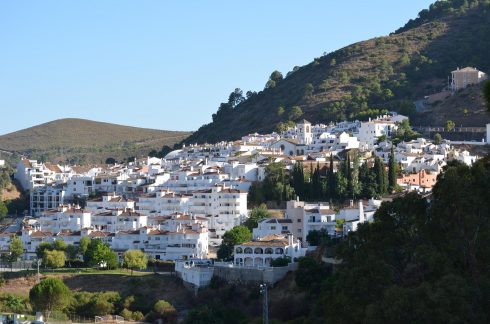
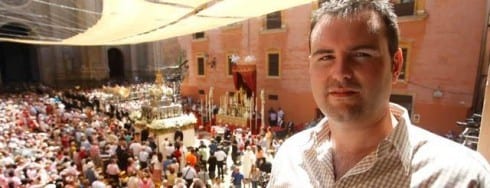
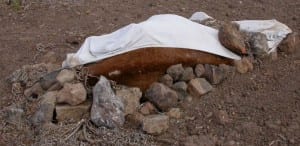
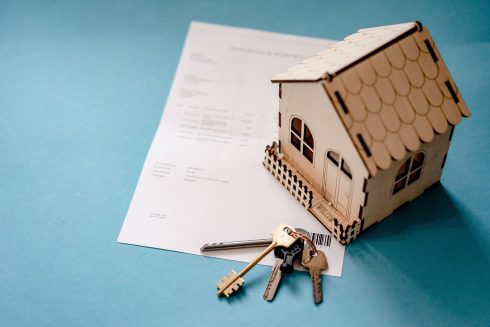

Really makes me want to visit there and has nothing to do with failed television productions.
Captain Cook died in 1779, although it is commonly believed by the estate agent community of Coin that he hung on for another 50 years.